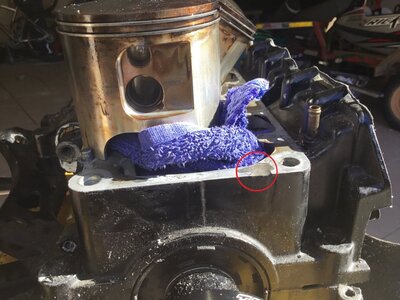this sounds legit
2 stroke reed valve engine. Reeds are a check valve. A one way valve. They keep the mixture from being pushed back into the carb. Many engines are also of the piston port design.
People understand that the air fuel mixture is created by the air rushing past the venturi and going into the engine crankcase as the piston moves up. When the piston gets to the top of its stroke it has compressed the mixture, fires and pushes the piston down. . At this point they often don't picture what is happening next. The air/fuel mixture that has filled the crankcase now has to be pushed through the transfer ports and into the cylinder and push the exhaust gases out. As the piston moves down it closes the carb port, opens the exhaust port and compresses the mixture in the crankcase, moving it through the transfer ports and into the cylinder pushing the exhaust gas out. Now the cylinder is full of mixture and the piston starts to move up again compressing the mixture. As the mixture in the cylinder is compressed the crankcase is drawing in more air/fuel mixture.
NOW THIS is the important part...............IF there are any leaks in the crankcase, this process is affected. All the carb kits, spark plugs, clean exhaust ports, etc in world will not make it run properly if the crankcase is leaking. Places that leak are the crankshaft seals, cylinder base gasket, crankcase halves, plastic intake manifolds. Lets say the piston is moving up and the crankcase is filling with mixture. If there is a leak it will be pulling in air that has no fuel/oil in it. (lean) and when the piston is coming down it will want to push some of the mixture out of the leak instead of transferring it into the cylinder (low fuel/air fill=low power). The carb is also affected because the pulse signal to the diaphragm is reduced. It cant flutter the diaphragm from the piston movement if its leaking. Its the path of least resistance theory. If it can shoot out the leak easier than it can flutter the diaphragm, it will.
 on AM ported motors
on AM ported motors on AM ported motors
on AM ported motors
